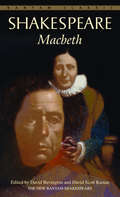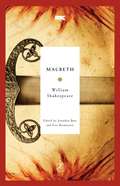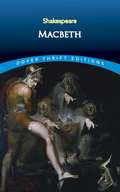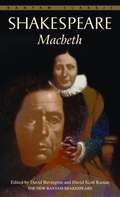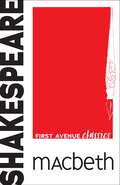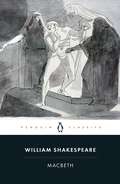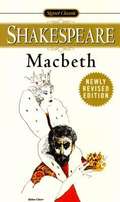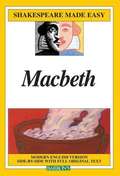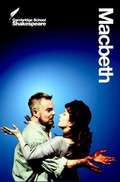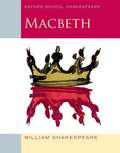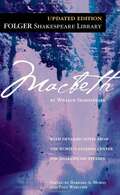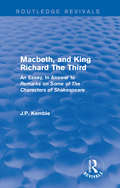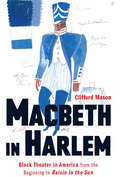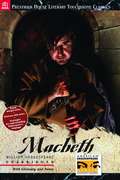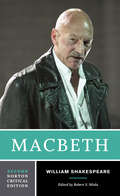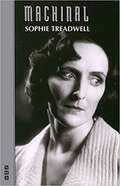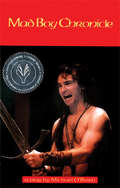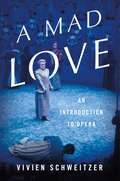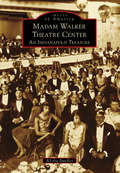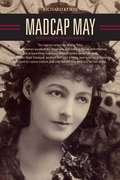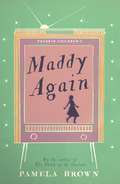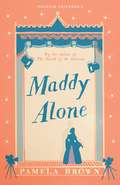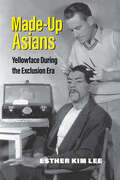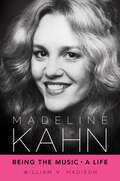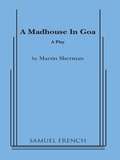- Table View
- List View
Macbeth
by William ShakespeareNo dramatist has ever seen with more frightening clarity into the heart and mind of a murderer than has Shakespeare in this compelling tragedy of evil. Taunted into asserting his "masculinity" by his ambitious wife, Macbeth chooses to embrace the Weird Sisters' prophecy and kill his king-and thus, seals his own doom. Fast-moving and bloody, this drama has the extraordinary energy that derives from a brilliant plot replete with treachery and murder, and from Shakespeare's compelling portrait of the ultimate battle between a mind and its own guilt.Each Edition Includes:* Comprehensive explanatory notes * Vivid introductions and the most up-to-date scholarship * Clear, modernized spelling and punctuation, enabling contemporary readers to understand the Elizabethan English* Completely updated, detailed bibliographies and performance histories * An interpretive essay on film adaptations of the play, along with an extensive filmography. Notes and introduction provided by David Bevington and David Scott Kastan. [This text is listed as an example that meets Common Core Standards in English language arts in grades 9-10 at http://www.corestandards.org.]
Macbeth (Modern Library Classics)
by William ShakespeareNo dramatist has ever seen with more frightening clarity into the heart and mind of a murderer than has Shakespeare in this compelling tragedy of evil. Taunted into asserting his “masculinity” by his ambitious wife, Macbeth chooses to embrace the Weird Sisters’ prophecy and kill his king–and thus, seals his own doom. Fast-moving and bloody, this drama has the extraordinary energy that derives from a brilliant plot replete with treachery and murder, and from Shakespeare’s compelling portrait of the ultimate battle between a mind and its own guilt. [This text is listed as an example that meets Common Core Standards in English language arts in grades 9-10 at http://www.corestandards.org.]
Macbeth (Dover Thrift Editions)
by William ShakespeareOne of the great Shakespearean tragedies, Macbeth is a dark and bloody drama of ambition, murder, guilt, and revenge. <P><P>Prompted by the prophecies of three mysterious witches and goaded by his ambitious wife, the Scottish thane Macbeth murders Duncan, King of Scotland, in order to succeed him on the throne. <P>This foul deed soon entangles the conscience-stricken nobleman in a web of treachery, deceit, and more murders, which ultimately spells his doom. <P>Set amid the gloomy castles and lonely heaths of medieval Scotland, Macbeth paints a striking dramatic portrait of a man of honor and integrity destroyed by a fatal character flaw and the tortures of a guilty imagination. <P>A selection of the Common Core State Standards Initiative.
Macbeth
by William ShakespeareNo dramatist has ever seen with more frightening clarity into the heart and mind of a murderer than has Shakespeare in this compelling tragedy of evil. Taunted into asserting his “masculinity” by his ambitious wife, Macbeth chooses to embrace the Weird Sisters’ prophecy and kill his king–and thus, seals his own doom. Fast-moving and bloody, this drama has the extraordinary energy that derives from a brilliant plot replete with treachery and murder, and from Shakespeare’s compelling portrait of the ultimate battle between a mind and its own guilt. [This text is listed as an example that meets Common Core Standards in English language arts in grades 9-10 at http://www.corestandards.org.]
Macbeth (First Avenue Classics ™)
by William ShakespeareTwo Scottish generals, Macbeth and Banquo, are on their way home from successful battles when they encounter three witches. With the prophecies of power and fame they give him swirling through his head, Macbeth tells his wife that the witches divined that he would become king of Scotland. Eager to see her husband as king, Lady Macbeth encourages him to murder King Duncan and assume the throne. A tale of obsession and forcing the fates, this unabridged version of William Shakespeare's classic English tragedy was first published in 1623.
Macbeth
by William Shakespeare'A supreme theatrical poem that has a language that eats into the soul' Michael Billington, GuardianShakeapeare's blood-soaked drama of murder, madness and the uncanny begins as Macbeth is promised a golden future as ruler of Scotland by supernatural forces. Spurred on by his wife, he murders the king to ensure his ambitions come true. But he soon learns the meaning of terror - killing once, he must kill again and again, while the dead return to haunt him. Macbeth is an anatomy of fear and a bleak portrayal of what some will do to achieve their desires.General Introduction by STANLEY WELLS Edited by GEORGE HUNTER Introduction by CAROL CHILLINGTON RUTTER
Macbeth
by William Shakespeare Sylvan BarnetA man's thirst for power ends in tragedy in this Signet Classics edition of one of William Shakespeare's most powerful works. When a trio of witches fortell that Macbeth will become King of Scotland, the brave general is consumed by ambition. Encouraged by his wife to seize the throne, their quest for power leads down a blood strewn path that ends in madness and death in this play that explores the consequences of guilt and corruption. This revised Signet Classics edition includes unique features such as: * An overview of Shakespeare's life, world, and theater * A special introduction to the play by the editor, Sylvan Barnet * Selections from Raphael Holinshed's The Chronicles of England, Scotland, and Ireland, the source from which Shakespeare derived Macbeth * Dramatic criticism from A. C. Bradley, Elmer Edgar Stoll, Mary McCarthy, and others * A comprehensive stage and screen history of notable actors, directors, and productions * Text, notes, and commentaries printed in the clearest, most readable text * And more. . .
Macbeth (Shakespeare Made Easy)
by William Shakespeare Alan DurbandHere are the books that help teach Shakespeare plays without the teacher constantly needing to explain and define Elizabethan terms, slang, and other ways of expression that are different from our own. Each play is presented with Shakespeare's original lines on each left-hand page, and a modern, easy-to-understand "translation" on the facing right-hand page. All dramas are complete, with every original Shakespearian line, and a full-length modern rendition of the text.
Macbeth
by William Shakespeare Rex GibsonCambridge School Shakespeare editions offer an active approach to the Bard's works, treating each play as a script to be acted, explored and enjoyed.
Macbeth
by William Shakespeare Roma GillOxford School Shakespeare is an acclaimed edition especially designed for students, with accessible on-page notes and explanatory illustrations, clear background information, and rigorous but accessible scholarly credentials. Macbeth is one of the most popular texts for study by secondary students the world over. This edition includes illustrations, preliminary notes, reading lists (including websites) and classroom notes.
Macbeth (Folger Shakespeare Library)
by William Shakespeare Barbara A. Mowat Paul WerstineNo dramatist has ever seen with more frightening clarity into the heart and mind of a murderer than has Shakespeare in this compelling tragedy of evil. Taunted into asserting his "masculinity" by his ambitious wife, Macbeth chooses to embrace the Weird Sisters' prophecy and kill his kingand thus, seals his own doom. Fast-moving and bloody, this drama has the extraordinary energy that derives from a brilliant plot replete with treachery and murder, and from Shakespeare's compelling portrait of the ultimate battle between a mind and its own guilt. Each Edition Includes: Comprehensive explanatory notes Vivid introductions and the most up-to-date scholarship Clear, modernized spelling and punctuation, enabling contemporary readers to understand the Elizabethan English Completely updated, detailed bibliographies and performance histories An interpretive essay on film adaptations of the play, along with an extensive filmography From the Paperback edition.
Macbeth, and King Richard The Third: An Essay, In Answer to Remarks on Some of The Characters of Shakespeare (Routledge Revivals)
by J.P. KembleJohn Philip Kemble was an ambitious and successful stage actor in London, perhaps most well-known for his turn as Shakespeare’s Macbeth. Kemble passionately disagreed with the posthumous work of Thomas Watley, Remarks on Some of the Characters of Shakespeare (1785), particularly Watley’s representations of some of Shakespeare’s greatest villains, Richard III and Macbeth. This title, first published in 1786 (this reprint of the second edition first published in 1970), presents Kemble’s nuanced criticisms of the characters leaving the impression that the villainies of Macbeth and Richard III are indeed similar. A historically important literary reaction, this title will be of interest to students of English literature and literary criticism.
Macbeth in Harlem: Black Theater in America from the Beginning to Raisin in the Sun
by Clifford MasonIn 1936 Orson Welles directed a celebrated all-black production of Macbeth that was hailed as a breakthrough for African Americans in the theater. For over a century, black performers had fought for the right to perform on the American stage, going all the way back to an 1820s Shakespearean troupe that performed Richard III, Othello, and Macbeth, without relying on white patronage. "Macbeth" in Harlem tells the story of these actors and their fellow black theatrical artists, from the early nineteenth century to the dawn of the civil rights era. For the first time we see how African American performers fought to carve out a space for authentic black voices onstage, at a time when blockbuster plays like Uncle Tom’s Cabin and The Octoroon trafficked in cheap stereotypes. Though the Harlem Renaissance brought an influx of talented black writers and directors to the forefront of the American stage, they still struggled to gain recognition from an indifferent critical press. Above all, "Macbeth" in Harlem is a testament to black artistry thriving in the face of adversity. It chronicles how even as the endemic racism in American society and its theatrical establishment forced black performers to abase themselves for white audiences’ amusement, African Americans overcame those obstacles to enrich the nation’s theater in countless ways.
Macbeth (Literary Touchstone Classics)
by William ShakespeareShakespeare's Macbeth is an intense examination of the corrupting nature of power, the ability of humans to choose their own destinies, and the lengths to which people will go to satisfy their own desires. The book includes a glossary of the more difficult words, as well as convenient sidebar notes to enlighten the reader on aspects that may be confusing or overlooked.
Macbeth (Second Edition) (Norton Critical Editions)
by William Shakespeare Robert S. MiolaA tragedy that evokes both pity and terror—now in a thoroughly revised and updated Norton Critical Edition. The Norton Critical Edition is again based on the First Folio (1623), the only authoritative text of the play. The volume includes a revised introduction and new annotations and textual notes. The Second Edition also includes the innovative feature “The Actors’ Gallery,” which presents famous actors and actresses—among them David Garrick, Sarah Siddons, Ian McKellen, Hira Mikijirô, Patrick Stewart, and Kate Fleetwood—reflecting on their roles in major productions of Macbeth for stage and screen. “Sources and Contexts” provides readers with an understanding of Macbeth’s origins in earlier texts, specifically the works of the Roman playwright Seneca, the Tudor historian Raphael Holinshed, and the medieval drama The Slaughter of the Innocents and the Death of Herod. Contexts for the play include contemporary debates on predestination versus free will (Martin Luther versus Erasmus), witchcraft as fiction or fact (Reginald Scott versus King James I), the ethics of regicide (an Elizabethan homily versus Jan de Mariana, S.J.), and the ethics of equivocation (Henry Garnet, S.J., versus—new to the Second Edition—Sir Edward Coke). Eight carefully chosen essays represent four hundred years of critical and theatrical interpretation. Contributors include Simon Forman, Samuel Johnson, Samuel Taylor Coleridge, Thomas De Quincey, Harry Levin, Stephen Orgel, Peter Holland, and, presenting the latest arguments on the authorship controversy, Gary Taylor. Finally, an engaging new selection of Macbeth’s “Afterlives” includes excerpts from Giuseppi Verdi’s Macbeth and related letters, Eugene Ionesco’s Macbett (1972), Bill Cain’s Equivocation (2009), and more. This edition also provides a list of online and print resources.
Machinal (Royal National Theatre)
by Sophie TreadwellA major rediscovery of a forgotten woman playwright of the twenties, Machinal is a powerful expressionist play about the status of women in an increasingly mechanized society, and the torture of a loveless marriage.
Mad Boy Chronicle
by Michael O'Brien Liz NichollsSet in the final days of the first millennium, Mad Boy Chronicle hauls the Hamlet story howling back to its origins. Join the Mad Boy as he sets out in fierce pursuit of his destiny, in a world where wolves, elves, spirits, and Jesus Christ all compete for the future of humanity.
A Mad Love: An Introduction to Opera
by Vivien SchweitzerA lively introduction to opera, from the Renaissance to the twenty-first centuryThere are few art forms as visceral and emotional as opera-and few that are as daunting for newcomers. A Mad Love offers a spirited and indispensable tour of opera's eclectic past and present, beginning with Monteverdi's L'Orfeo in 1607, generally considered the first successful opera, through classics like Carmen and La Boheme, and spanning to Brokeback Mountain and The Death of Klinghoffer in recent years. Musician and critic Vivien Schweitzer acquaints readers with the genre's most important composers and some of its most influential performers, recounts its long-standing debates, and explains its essential terminology. Today, opera is everywhere, from the historic houses of major opera companies to movie theaters and public parks to offbeat performance spaces and our earbuds. A Mad Love is an essential book for anyone who wants to appreciate this living, evolving art form in all its richness.
Madame Walker Theatre Center: An Indianapolis Treasure (Images of America)
by A'Lelia BundlesAs they watched construction of the block-long flatiron building brick by brick throughout 1927, African American residents of Indianapolis could scarcely contain their pride. This new headquarters of the Madam C.J. Walker Manufacturing Company, with its terra-cotta trimmed facade, was to be more than corporate offices and a factory for what then was one of America's most successful black businesses. In fact, it was designed as "a city within a city," with an African Art Deco theater, ballroom, restaurant, drugstore, beauty salon, beauty school, and medical offices. Generations of African American families met for Sunday dinner at the Coffee Pot, enjoyed first-run movies and live performances in the Walker Theatre, and hosted dances in the Casino. Today, this National Historic Landmark is an arts center anchoring the Indiana Avenue Cultural District.
Madcap May: Mistress of Myth, Men, and Hope
by Richard KurinMay Yohe was a popular entertainer from humble American origins who married and then abandoned a wealthy English Lord who owned the fabled Hope diamond--one of the most valuable objects in the world and now exhibited at the Smithsonian Institution in Washington, D.C. May was a romantic who had numerous lovers and at least three husbands--though the tabloids rumored twelve. One included the playboy son of the Mayor of New York. May separated from him--twice--and cared for her next husband, a South African war hero and invalid whom she later shot.Crossing the paths of Ethel Barrymore, Boris Karloff, Oscar Hammerstein, Teddy Roosevelt, Consuelo Vanderbilt, and the Prince of Wales, May Yohe was a foul-mouthed, sweet-voiced showgirl who drew both the praise and rebuke of Nobel laureate George Bernard Shaw. Nicknamed "Madcap May," she was a favorite of the press. In later years she faced several maternity claims and a law suit which she won. She was hospitalized in an insane asylum and escaped. She ran a rubber plantation in Singapore, a hotel in New Hampshire, and a chicken farm in Los Angeles. When all else failed, she washed floors in a Seattle shipyard, and during the Depression held a job as a government clerk. Shortly before her death, she fought, successfully, to regain her lost U.S. citizenship.How was this woman, May Yohe, able to charm her way to international repute, live an impossible life, and also find the strength to persevere in light of the losses she suffered--in wealth, citizenship, love, and sanity? Madcap May, assembled from her writings and historical interviews, archival records, newspaper stories, scrapbooks, photographs, playbills, theatrical reviews, souvenirs, and silent film, tells her heretofore lost story.
Maddy Again: Blue Door 5 (Blue Door #5)
by Pamela BrownThe fifth and final book in the Blue Door series, which starts with The Swish of the Curtain, the classic story which inspired actors from Maggie Smith to Eileen Atkins.Maddy got up and did her Junior Miss speech, trying not to overdo the comedy. Her American accent was hideous, and very funny, and all the class began to giggle.The whole class clapped when she had finished, and Mr Manyweather roared with laughter.'What a little horror!' he cried. 'I've never seen anything so nauseating, but excellent!'Maddy is on her own again at the Actors' Guild in London, while the others work at the Blue Door Theatre. But she's not entirely alone: she has a new roommate, a new chaperone and an inspiring new teacher, Mr Manyweather, brought in to introduce students to the very different world of television.With these friends, can Maddy survive her first taste of failure - or is she embarking on her greatest acting adventure yet?
Maddy Alone: Blue Door 2 (Blue Door #2)
by Pamela BrownThe second book in the Blue Door series, following on from The Swish of the Curtain, the classic story which inspired actors from Maggie Smith to Eileen AtkinsWith the rest of the Blue Door Theatre Company in London training to be actors, poor Maddy has been left all alone in the little town of Fenchester. She longs to follow the others to the big city, but she is 12 years old, and she has maths homework to do.However, Maddy has never let a bit of schoolwork come between her and her dreams. When she finds that a famous Dutch film director is in town, she leaps at the opportunity: she will be a film star. But stardom isn't an easy life (in spite of the personal dressing room and the lovely costumes) and there are setbacks and difficulties along the way. But with such a stubborn and talented leading lady as Maddy, surely even Mrs Potter-Smith and the headmistress can't stop the show from going on?Maddy Alone is the second book in the Blue Door series, following on from the classic of children's literature The Swish of the Curtain.
Made-Up Asians: Yellowface During the Exclusion Era
by Esther Kim LeeMade-Up Asians traces the history of yellowface, the theatrical convention of non-Asian actors putting on makeup and costume to look East Asian. Using specific case studies from European and U.S. theater, race science, and early film, Esther Kim Lee traces the development of yellowface in the U.S. context during the Exclusion Era (1862–1940), when Asians faced legal and cultural exclusion from immigration and citizenship. These caricatured, distorted, and misrepresented versions of Asians took the place of excluded Asians on theatrical stages and cinema screens. The book examines a wide-ranging set of primary sources, including makeup guidebooks, play catalogs, advertisements, biographies, and backstage anecdotes, providing new ways of understanding and categorizing yellowface as theatrical practice and historical subject. Made-Up Asians also shows how lingering effects of Asian exclusionary laws can still be seen in yellowface performances, casting practices, and anti-Asian violence into the 21st century.
Madeline Kahn: Being the Music, A Life (Hollywood Legends Series)
by William V. MadisonBest known for her Oscar-nominated roles in the smash hits Paper Moon and Blazing Saddles, Madeline Kahn (1942–1999) was one of the most popular comedians of her time—and one of the least understood. In private, she was as reserved and refined as her characters were bold and bawdy. Almost a Method actor in her approach, she took her work seriously. When crew members and audiences laughed, she asked why—as if they were laughing at her—and all her life she remained unsure of her gifts. William V. Madison examines Kahn's film career, including not only her triumphs with Mel Brooks and Peter Bogdanovich, but also her overlooked performances in The Adventure of Sherlock Holmes' Smarter Brother and Judy Berlin, her final film. Her work in television—notably her sitcoms—also comes into focus. New York theater showered her with accolades, but also with remarkably bad luck, culminating in a disastrous outing in On the Twentieth Century that wrecked her reputation on Broadway. Only with her Tony-winning performance in The Sisters Rosensweig, fifteen years later, did Kahn regain her standing. Drawing on new interviews with family, friends, and such colleagues as Lily Tomlin, Carol Burnett, Gene Wilder, Harold Prince, and Eileen Brennan, as well as archival press and private writings, Madison uncovers Kahn's lonely childhood and her struggles as a single woman working to provide for her erratic mother. Above all, Madison reveals the paramount importance of music in Kahn's life. A talented singer, she entertained offers for operatic engagements long after she was an established Hollywood star, and she treated each script as a score. As Kahn told one friend, her ambition was “to be the music.”
A Madhouse in Goa
by Martin ShermanFull Length, Drama / 4 m, 2 f, with doubling / 2 verandas / Webs of personal, political, sexual, social and artistic deception unfold in the indigo nights and bright days of the Greek islands in this two part play by the author of Bent which starred Vanessa Redgrave in London and Judith Ivey in New York. In A Table for a King, which can also be produced as a one act, a writer helps blackmail an unpleasant and uncompromising woman who refuses to relinquish her table on the terrace of a Corfu hotel for the King of Greece. Part Two, Keeps Rainin' All the Time, moves to Santorini where a disparate group of expatriates, including a famous author, face nuclear rain, terrorism and the impending eruption of the volcano. The same cast may appear in both parts. / "The best new play of the London year."-Time
